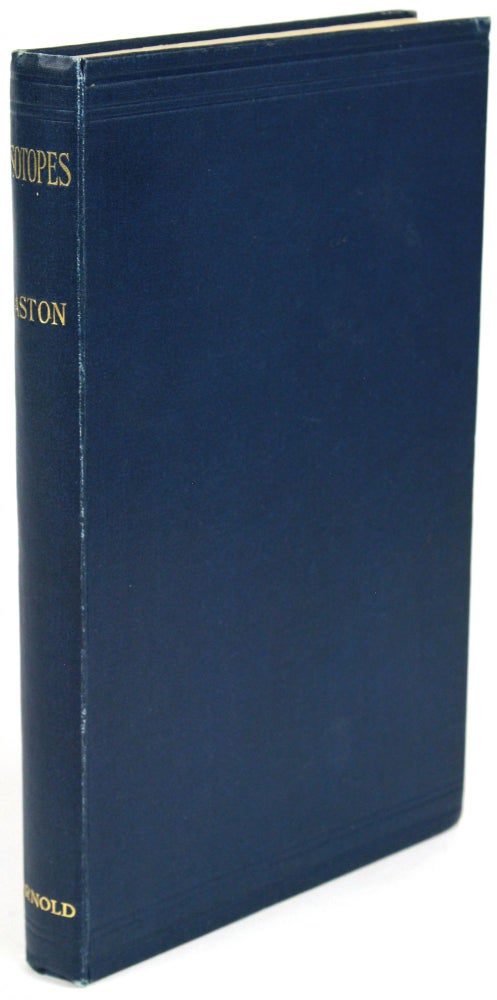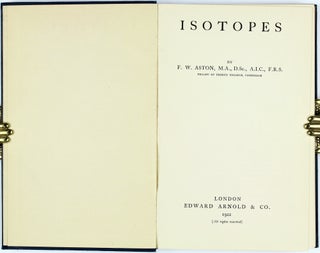Isotopes
London: Edward Arnold, 1922. First Edition. Hardcover. First Impression of Aston’s key work on isotopes, for which he was awarded the Nobel Prize in 1922. 8vo: viii,152pp, with 4 halftone plates and numerous tables and line drawings in the text. Publisher's original dark blue cloth, covers paneled in blind, spine lettered in gilt. A beautiful copy, uncommon in such nice condition. Fine, except for light offsetting to end papers and slightly bumped spine ends. Appears unread. Judging from auction records, never issued in dust jacket. Norman 77. PMM 412. Gillispie, pp. 320-22. Fine. Item #BB1519
Aston, building on the work of J. J. Thomson at Cambridge, developed modern mass spectrograph technology to investigate inconsistencies in the atomic weights of elements, discovering that “the elements are composed of atoms of varying mass, the atomic weight of an element being the average of those atoms comprising it…. [Frederick] Soddy had coined the term isotopes for elements that are ‘homogenous in chemical behaviour’. Thus, for example, no process of chemical analysis will differentiate between thorium, one form of uranium, and ionium, although each has a different atomic weight. Aston carried this investigation one very important stage further by demonstrating that similar conditions occur within the elements themselves [eventually identifying 212 naturally occurring isotopes by analyzing all but three of the non-radioactive elements in the periodic table.]. . . . The ultimate consequences of these discrepancies are far-reaching. The ration between hydrogen and oxygen is not 4:1, as it ‘should be’, but rather less; which means that when four atoms of hydrogen are transformed into one helium atom some matter is annihilated. In fact this is an example of the interchangeability between mass and energy which is postulated in Einstein’s General Theory of Relativity” (PMM 412). Aston's "work on isotopes also led to his formulation of the whole number rule which states that 'the mass of the oxygen isotope being defined [as 16], all the other isotopes have masses that are very nearly whole numbers,' a rule that was used extensively in the development of nuclear energy." (ODNB) "Aston's achievements were kept continually before the scientific public by revised editions of his excellent book Isotopes. The included . . . a clear forecast of the power and dangers of harnassed atomic energy." (Gillispie) N. B. With few exceptions (always identified), we only stock books in exceptional condition, carefully preserved in archival, removable polypropylene sleeves. All orders are packaged with care and posted promptly. Satisfaction guaranteed.
Price: $649.00


